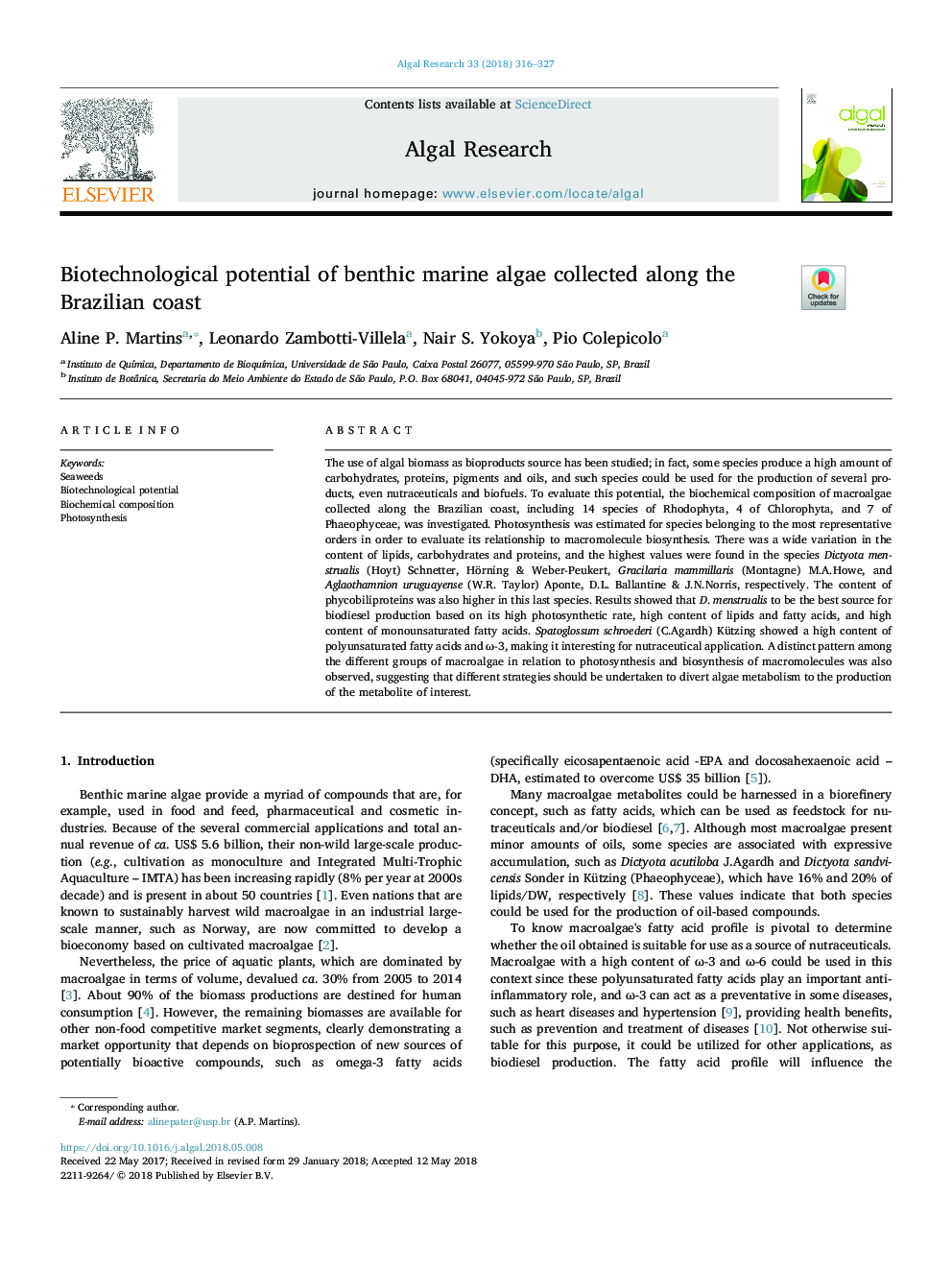| Article ID | Journal | Published Year | Pages | File Type |
|---|---|---|---|---|
| 8085798 | Algal Research | 2018 | 12 Pages |
Abstract
The use of algal biomass as bioproducts source has been studied; in fact, some species produce a high amount of carbohydrates, proteins, pigments and oils, and such species could be used for the production of several products, even nutraceuticals and biofuels. To evaluate this potential, the biochemical composition of macroalgae collected along the Brazilian coast, including 14 species of Rhodophyta, 4 of Chlorophyta, and 7 of Phaeophyceae, was investigated. Photosynthesis was estimated for species belonging to the most representative orders in order to evaluate its relationship to macromolecule biosynthesis. There was a wide variation in the content of lipids, carbohydrates and proteins, and the highest values were found in the species Dictyota menstrualis (Hoyt) Schnetter, Hörning & Weber-Peukert, Gracilaria mammillaris (Montagne) M.A.Howe, and Aglaothamnion uruguayense (W.R. Taylor) Aponte, D.L. Ballantine & J.N.Norris, respectively. The content of phycobiliproteins was also higher in this last species. Results showed that D. menstrualis to be the best source for biodiesel production based on its high photosynthetic rate, high content of lipids and fatty acids, and high content of monounsaturated fatty acids. Spatoglossum schroederi (C.Agardh) Kützing showed a high content of polyunsaturated fatty acids and Ï-3, making it interesting for nutraceutical application. A distinct pattern among the different groups of macroalgae in relation to photosynthesis and biosynthesis of macromolecules was also observed, suggesting that different strategies should be undertaken to divert algae metabolism to the production of the metabolite of interest.
Related Topics
Physical Sciences and Engineering
Energy
Renewable Energy, Sustainability and the Environment
Authors
Aline P. Martins, Leonardo Zambotti-Villela, Nair S. Yokoya, Pio Colepicolo,
